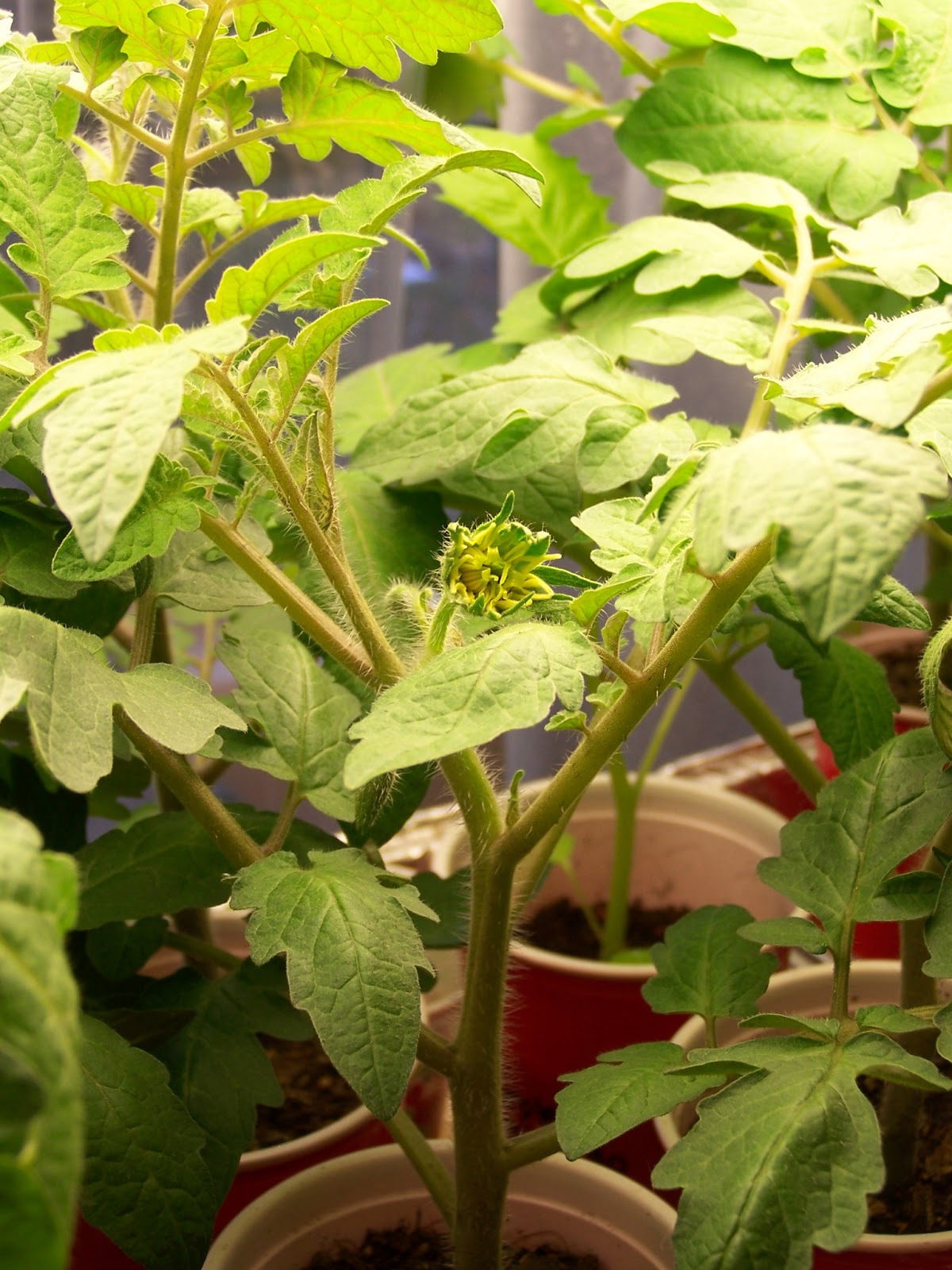Planting the babies March 18, 2013
Root system of transplants.
Planting deep so that roots can develop along the stem. We also mixed in a handful of organic veggie fertilizer, a handful of compost, and a handful of earthworm castings. Once planted, we watered with a weak combination of liquid organic fertilizer and fish emulsion.
We planted 3 Homestead 24 plants, 4 Pantano Romanesco plants, 1 Rutgers, and 2 Beefsteak tomatoes. (We still have some large cherry tomato and tomatillos to plant.)
We got 10 of the tomato plants planted, stopped for the day, watched the news and discovered that a freeze was heading our way in a couple of days. How frustrating!! We haven't hardly had any freezing weather and then as soon as we try to start the garden...WHAM! We spent a couple of days watching the weather and coming up with a plan. We decided that since the plants were planted deeply (at least 18" deep) and not much top growth was showing, we'd cover them with buckets and hope for the best. We watered them well to help protect the roots. My husband also decided that we could use Christmas lights to generate a bit of heat inside the buckets at night to raise the temps inside a bit.
Under the buckets 3/25/13 (obviously from Home Depot!) with Christmas lights. Wonder what planes flying overhead thought!! LOL
Freeze burn on leaves.
Some green remains, but a lot of freeze damage.
This one looks really sad. The poor thing was already in trouble to begin with. It's stalk had bent during some winds, so we went ahead and planted it about 2 days prior to the cold front. We planted it deep so that the bend was underground and hoped for the best.
After we uncovered the plants, we gave them some more fertilizer (just diluted fish emulsion this time) and started babying them. Thankfully, the weather cooperated until this week when we got lows on Wednesday night in the upper 30s. We once again watered and fertilized well in anticipation of the cooler temps. Once again, the buckets came out and we covered the babies. This time, they did fine and everything is green! We haven't lost one tomato plant yet! Now, if they'd just start producing, I'd be happy!!
This is the same plant as the middle pic in the set above. We've cut off all freeze damaged leaves and it's put on new growth and doing great!
This is the little one that had the broken stem and almost died during the first freeze in late March. Look at it now!
This is the same plant from above that had almost no green growth on it after the freeze in March that I thought would die. Lots of new growth now!
I heard today on the news that we might get more cold weather next week. I have my lights and buckets ready!! All I can say is that these guys had better produce a HUGE crop with all this attention they've gotten!! What we do to save our plants!




























